South African president fires DA deputy minister, angering coalition partner
SADC moves to exploit natural gas across the region
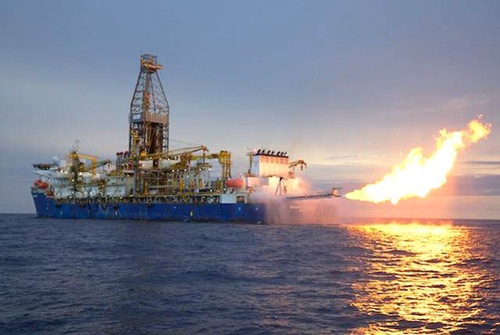
In file CoM
The SADC interstate natural gas committee is set to meet in March this year to approve and review the Terms of Reference (TORs) master plan for development of natural gas reserves within the region.
The regional inter-state natural gas committee, which was launched in 2017 at the SADC summit in South Africa, has been pushing the promotion of natural gas in the regional energy mix ever since its establishment.
The committee, which is currently in the process of developing TORs for the development of the regional gas master plan and mobilising resources from the prospective cooperating partners, is hoping to conclude the plan by March this year when it meets at a venue yet to be announced.
The SADC Secretariat in June last year began a journey to extract natural gas across the region.
Southern Africa is believed to be sitting on natural gas reserves of about 600 trillion cubic feet and this could reduce heavy reliance on biomass energy once fully exploited.
The reserves remain largely untapped due to lack of capital, feasibility studies and plans to extract the gas. Only South Africa and Mozambique have so far begun exploiting some of the natural gas reserves in those countries.
Speaking at the 37th SADC Summit in Pretoria in 2017, the then South African President Jacob Zuma said the discovery and exploitation of natural gas in the region should constitute the backbone of SADC’s regional economic integration.
He urged the region to develop the natural gas reserves as soon as possible to accelerate the region’s development.
In an interview this week, SADC senior public relations officer and spokesperson, Barbra Lopi, said the committee secretariat is working day and night to make sure the mission of the committee is accomplished.
“The SADC Inter-State Committee has continued to make progress such as developing the terms of reference (TORs) for the committee which have approved by the Committee of Ministers responsible for Energy.
“The plan is to convene the first meeting in 2019/2020. The member states have the prerogative to nominate representatives. So far the secretariat received names from the Ministries and Departments for Energy, Energy Regulators, national oil companies and some national power utilities.
“The Secretariat is currently developing TORs for the development of the Regional Gas Master Plan and mobilising resources from the prospective cooperating partners.
“The master plan will propose some projects to be undertaken as pilot projects and others in a short, medium and long term,” Lopi said.
“The plan is to convene the meetings of the Inter-State Gas Committee during 2019/2020 financial year.
“However, the member states, through Energy Subcommittees, met in December 2018 to discuss among other issues the development of the Regional Gas Master Plan and held a consultative workshop with the private sector on ‘SADC Regional natural gas resources for Industrial Growth and Sustainable Development’ in Windhoek, Namibia on 11 December 2018.
“In addition, another extraordinary meeting of senior energy officials to operationalise the committee and approve the TORs for development of the gas master plan is scheduled for March 2019,” Lopi added.
The SADC inter regional natural gas committee has a big task ahead, as according to the SADC Energy Monitor, the contribution of gas to the regional energy mix is still very minimal, accounting for a mere 1.3 percent of the total power generation mix, despite the fact that Southern Africa has some of the largest deposits of gas in the world.
The east coast of the SADC region has emerged in the past few years as one of the brightest spots on the global energy landscape, with large natural gas finds in Mozambique and Tanzania.
Exploration has taken place in other SADC member states although the exact amounts of reserves are unknown.
Offshore natural gas reserves along the Mozambique coast are expected to be a “game changer” for the country and the southern African region. The country has estimated recoverable natural gas reserves of between 15 trillion and 30 trillion cubic feet (tcf), enough to meet one year’s gas consumption by the United States of America.
Tanzania has also identified natural gas reserves of more than 10 tcf from its deep-water offshore region.
Zimbabwe’s gas reserves in Lupane and Hwange are estimated to be over 800 million cubic metres per square metre.
According to the Ministry Energy and Power Development, Zimbabwe’s gas reserves are expected to generate not only gas products if the project is well handled.
The ministry’s permanent secretary, Gloria Magombo, said there is still much to be done in terms of utilising Southern Africa’s natural gas reserves.
“The SADC inter regional gas committee has a big task to accomplish. SADC is rich when it comes to natural gas deposits,” she said.
“In our country for example, we have the natural gas deposits in Muzarabani, Lupane and Hwange and there is much that needs to be done in terms of making use of those resources.
“A lot is in the process as we speak, but then in terms of mining those gas composites, I cannot speak much about it because it is the Ministry of Mines and Mining Development that deals with that.
“But yes, once our natural gas deposits have started to fully function, a lot of energy is going to be generated.
“We do not get only gas from mining natural gas, the process will give us chemicals and a lot more products,” she said.
By Sinikiwe Marodza





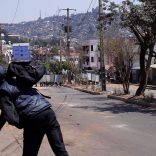

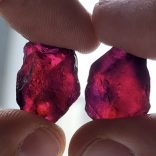

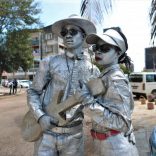
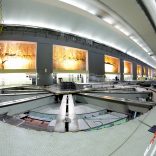


Leave a Reply
Be the First to Comment!
You must be logged in to post a comment.
You must be logged in to post a comment.